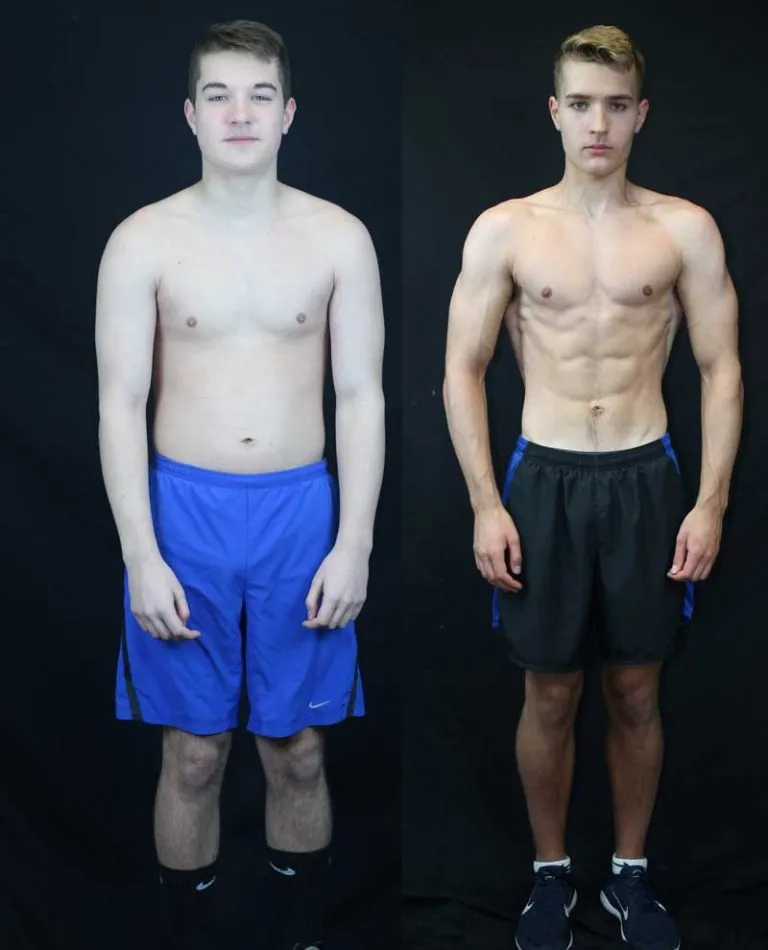It’s a common belief that in order to burn fat, you must do “cardio.” However, science (and experience) proves that to be false, and we have some photos to prove it! In reality, your body is constantly both burning and storing body fat. Over a long period of time, if you’ve burned more fat than you have stored, you will see a decrease in total body fat. This is done by being in a calorie deficit. In other words burning more calories than you consume, again on average over a long period of time. There are two parts to that equation, one is eating fewer calories, and the other is burning more calories. Just as the type of calories you consume can impact your metabolism (the ratio of macronutrients: proteins, carbs, fats), so can the type of exercise you do, but not in the way that you think.
The Cardio Myth
First of all, it’s important to clarify that the term “cardio” is a bit ambiguous. Most people refer to any exercise that’s not traditional strength training to be cardio, like running, biking, swimming, and even circuit training with weights is often considered cardio. Experienced coaches don’t think of exercise in that way. We typically categorize exercise by which energy system it predominantly uses. There are three primary energy sources in the body: aerobic, anaerobic (lactic) and anaerobic (alactic). We won’t get too deep into the science, but the type of training you do determines which of these three is primarily fueling that exercise. Note that “primarily” meaning that at no point in time are any of these systems “turned off” in your body.
When most people say “cardio” what they mean is aerobic exercise. This is exercise that primarily utilizes your aerobic energy system. This is typically any exercise with a light load and repetitive movement, jogging or running is a great example of this. So why do people think you need aerobic exercise to lose fat? Because the aerobic energy system is the only system that utilizes oxygen, and fat is oxidized with…you guessed it…oxygen. When body fat is burned it is oxidized and exhaled as carbon dioxide in your breath. It seems like just doing endless aerobic exercise would be the key to getting shredded, right? Unfortunately, as mentioned before, your body is constantly burning fat but also constantly storing it. Let’s say for example you burn half a pound of fat in a week via running, but in that same week you ate more calories than your body needed…your net weight change would be 0!
Lifting Weights and Losing Weight
It’s important to remember that just because the aerobic energy system might be the predominant energy system using during traditional “cardio” activities, that doesn’t mean you’re not also burning fat while lifting weights and doing strength training exercises. Strength training also has been shown to have greater EPOC than aerobic exercise. Translation: Your metabolism stays more “revved up” after the exercise has ended when comparing strength training to “cardio.”
But that’s not the real magic of strength training…A well thought out strength training routine is better for fat loss for reasons you may not have considered. When you’re in a calorie deficit, you don’t just lose fat, but all your body’s tissues will shrink. That includes your muscles. Strength training can help spare muscle, meaning more of the weight you lose comes from body fat. Strength training (when done correctly) is a bit more well rounded than an activity like…running. For example when you run, you are using the same muscles in the same way over and over and over again. A well thought out strength training program works all your muscles in a multitude of ways. That’s why we recommend if you do run as your primary mode of fitness, that you add in supplemental activities regularly like strength training.
It’s also worth mentioning that individuals with more muscle burn more calories at rest. That means if two people each weigh 200lbs, but one has 10% body fat and the other has 20% body fat, the person with less body fat will burn more calories at rest even though they both weigh the same amount.
Ultimately, just as you have an increase in calorie output when you run or do “cardio” you also have an increase in calorie output when you lift weights. Lifting weights has the added benefit of helping to preserve muscle, and sculpt your entire body, not just a select few muscles. This means that manipulating your nutrition is really the key to getting lean. The type of exercise you choose is secondary. Need proof? Check out these photos of Drew, who just finished his “cut” where he maintained his normal strength training routine, didn’t add in any cardio, and simply made some tweaks to his diet. The results speak for themselves.






